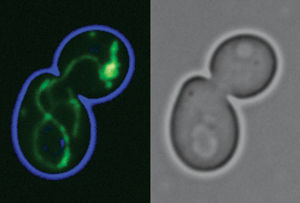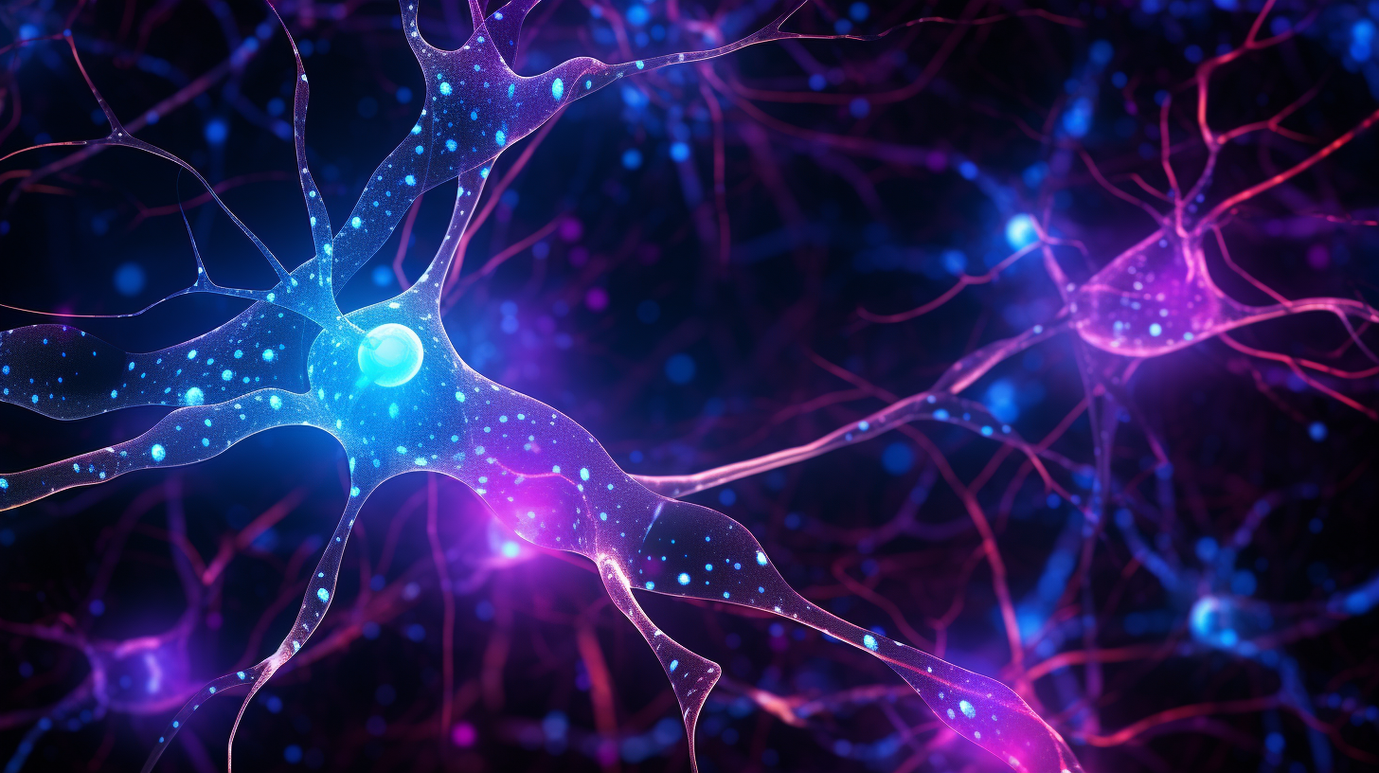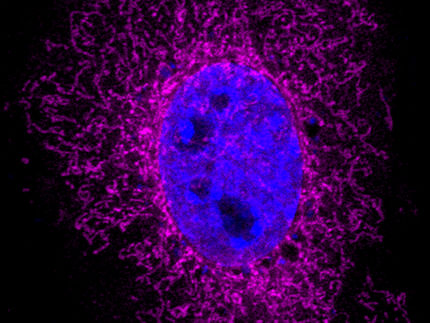Evolution of Cellular Power Stations
The protein OXA plays an important role in integrating protein molecules into mitochondria
mitochondria are the power stations of human cells. They provide the energy needed for the cellular metabolism. But how did these power stations evolve, and how are they constructed? Researchers from the University of Freiburg studied the role of so-called oxidase assembly machinery, or OXA, in the development of the inner membrane of mitochondria and the energy supply of cells. Dr. Jan Höpker, Dr. Silke Oeljeklaus, Prof. Dr. Nikolaus Pfanner, Dr. Sebastian Stiller, Prof. Dr. Bettina Warscheid, Prof. Dr. Nils Wiedemann and their team of researchers have demonstrated that this protein complex is essential for the integration of certain proteins into the inner membrane of mitochondria – proteins that play a role in cellular respiration and other processes.
Mitochondria originate from a bacterium, meaning they have their own DNA molecule in which the structure of several proteins is recorded. An OXA-like machinery already existed in the bacterial precursor of mitochondria and has been conserved throughout evolution. The proteins produced according to the mitochondrion's genetic material are integrated by the OXA into the inner mitochondrial membrane. The genetic information of 99 percent of the proteins comprising mitochondria are stored in the cell’s nucleus, however. The cell produces these protein molecules in the cytoplasm, after which the TOM, or “Translocase of the Outer Membrane”, and the TIM, “Translocase of the Inner Membrane”, transport them across the outer and inner membranes into mitochondria. How many of these imported proteins are also integrated into the inner membrane by OXA was unclear until now.
The researchers from the University of Freiburg systematically searched for proteins integrated by OXA into the inner membrane after they had been imported via TOM and TIM. They used an analytical technique called quantitative mass spectrometry to identify mitochondrial inner membrane proteins which are reduced in cells without OXA. By tracing the integration of radioactively labelled proteins into the inner mitochondrial membrane, they were able to prove that OXA is necessary for this process.
The imported OXA-dependent proteins play important functions that range from cellular respiration, the exchange of metal ions, and biochemical reactions, to the integration of proteins enabling the transfer of metabolic products across the inner membrane. When the integration or function of these respiratory proteins is blocked, this can cause mitochondrial-based neuromuscular diseases or cancer. The OXA-dependent integration of inner membrane proteins, which has been conserved throughout evolution, is thus fundamental for the formation of the mitochondrial inner membrane and for the energy supply of human cells.
Nikolaus Pfanner and Nils Wiedemann are leaders of research groups at the Institute for Biochemistry and Molecular Biology of the University of Freiburg. Sebastian Stiller is a researcher in Wiedemann’s lab, while Jan Höpker is a former member of Pfanner’s research group. Bettina Warscheid is a professor at the Institute of Biology II of the University of Freiburg, and Silke Oeljeklaus is a researcher in Warscheid’s lab. Pfanner, Warscheid and Wiedemann are all members of the Cluster of Excellence BIOSS Centre for Biological Signalling Studies as well as the Spemann Graduate School of Biology and Medicine of the University of Freiburg.

Fluorescence microscopy image of the mitochondrial network (left, in green) and the corresponding light microscopy image (right) of a dividing yeast cell.
Nils Wiedemann, Universität Freiburg
Original publication
Sebastian B. Stiller, Jan Höpker, Silke Oeljeklaus, Conny Schütze, Sandra G. Schrempp, Jens Vent-Schmidt, Susanne E. Horvath, Ann E. Frazier, Natalia Gebert, Martin van der Laan, Maria Bohnert, Bettina Warscheid, Nikolaus Pfanner, Nils Wiedemann; "Mitochondrial OXA Translocase Plays a Major Role in Biogenesis of Inner-Membrane Proteins"; Cell Metabolism; 2016
Most read news
Original publication
Sebastian B. Stiller, Jan Höpker, Silke Oeljeklaus, Conny Schütze, Sandra G. Schrempp, Jens Vent-Schmidt, Susanne E. Horvath, Ann E. Frazier, Natalia Gebert, Martin van der Laan, Maria Bohnert, Bettina Warscheid, Nikolaus Pfanner, Nils Wiedemann; "Mitochondrial OXA Translocase Plays a Major Role in Biogenesis of Inner-Membrane Proteins"; Cell Metabolism; 2016
Topics
Organizations
Other news from the department science

Get the life science industry in your inbox
From now on, don't miss a thing: Our newsletter for biotechnology, pharma and life sciences brings you up to date every Tuesday and Thursday. The latest industry news, product highlights and innovations - compact and easy to understand in your inbox. Researched by us so you don't have to.
Most read news
More news from our other portals
See the theme worlds for related content
Topic world Fluorescence microscopy
Fluorescence microscopy has revolutionized life sciences, biotechnology and pharmaceuticals. With its ability to visualize specific molecules and structures in cells and tissues through fluorescent markers, it offers unique insights at the molecular and cellular level. With its high sensitivity and resolution, fluorescence microscopy facilitates the understanding of complex biological processes and drives innovation in therapy and diagnostics.

Topic world Fluorescence microscopy
Fluorescence microscopy has revolutionized life sciences, biotechnology and pharmaceuticals. With its ability to visualize specific molecules and structures in cells and tissues through fluorescent markers, it offers unique insights at the molecular and cellular level. With its high sensitivity and resolution, fluorescence microscopy facilitates the understanding of complex biological processes and drives innovation in therapy and diagnostics.
Topic World Mass Spectrometry
Mass spectrometry enables us to detect and identify molecules and reveal their structure. Whether in chemistry, biochemistry or forensics - mass spectrometry opens up unexpected insights into the composition of our world. Immerse yourself in the fascinating world of mass spectrometry!

Topic World Mass Spectrometry
Mass spectrometry enables us to detect and identify molecules and reveal their structure. Whether in chemistry, biochemistry or forensics - mass spectrometry opens up unexpected insights into the composition of our world. Immerse yourself in the fascinating world of mass spectrometry!

























































